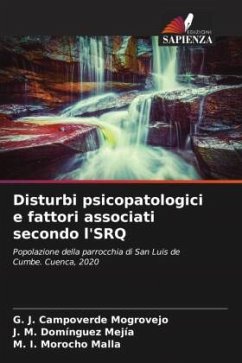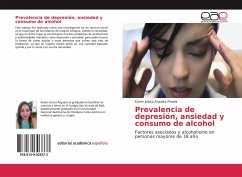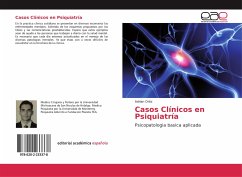
Psychopathological disorders and associated factors according to SRQ
People of San Luis de Cumbe parish. Cuenca, 2020
Versandkostenfrei!
Versandfertig in 6-10 Tagen
27,99 €
inkl. MwSt.

PAYBACK Punkte
14 °P sammeln!
Objective: to evaluate psychopathological disorders and associated factors according to the SRQ in people from the San Luis de Cumbe Parish of Cuenca Canton. Methods and materials: a cross-sectional quantitative research was carried out with a universe of 6,582 inhabitants of the San Luis de Cumbe parish, from which a sample of 364 persons was taken with a confidence of 95%, margin of error of 5% and prevalence of 50%. The information was collected through a sociodemographic survey and the SRQ test. To determine the association between the object of study and the associated factors, the OR was...
Objective: to evaluate psychopathological disorders and associated factors according to the SRQ in people from the San Luis de Cumbe Parish of Cuenca Canton. Methods and materials: a cross-sectional quantitative research was carried out with a universe of 6,582 inhabitants of the San Luis de Cumbe parish, from which a sample of 364 persons was taken with a confidence of 95%, margin of error of 5% and prevalence of 50%. The information was collected through a sociodemographic survey and the SRQ test. To determine the association between the object of study and the associated factors, the OR was obtained with its 95% CI and the p value to determine statistical significance. Results: 19.2% of people presented depression, 40.7% anxiety, 13.2% psychosis, 6.6% epilepsy and 13.2% alcoholism, being a young adult is a risk factor with a p-value of p=0.041 and p=0.034 for depression and anxiety. Conclusions: being an adult is a protective factor for psychosis and alcoholism, mestizo for anxiety, free union and artisan for epilepsy while being young adult and indigenous is a risk factor.risk factor.












